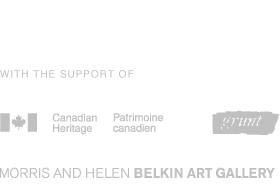Aboriginal Art in the Sixties: Fine and Popular
-
51
details
-
75
details
-
107
details
-
106
details
-
105
details
-
104
details
-
98
details
-
97
details
-
96
details
-
74
details
-
163
details
-
71
details
-
69
details
-
65
details
-
820
details
-
816
details
-
814
details
-
813
details
-
108
details
-
240
details
-
809
details
-
54
details
-
59
details
-
10
details
-
180
details
-
168
details
-
167
details
-
824
details
-
823
details
-
817
details
-
181
details
-
815
details
-
241
details
-
811
details
-
787
details
-
786
details
-
784
details
-
242
details
-
810
details
-
244
details
-
52
details
-
158
details
-
171
details
-
166
details
-
165
details
-
162
details
-
161
details
-
160
details
-
159
details
-
157
details
-
176
details
-
156
details
-
103
details
-
102
details
-
101
details
-
93
details
-
60
details
-
55
details
-
174
details
-
177
details
-
172
details
-
243
details
-
170
details
-
169
details
-
164
details
-
73
details
-
828
details
-
819
details
-
818
details
-
234
details
-
178
details
-
233
details
-
232
details
-
231
details
-
230
details
-
183
details
-
182
details
-
821
details
-
179
details
-
89
details
Forays Into Modernism
As western institutional support for “Indian art” grew in the late 1940s, Aboriginal artists drew on and applied, in varying degrees of proficiency, modern art mediums such as water colour, oil, and mural paintings. By the 1960s, many artists were print makers, colourists and figure drawers. They mixed, for example, crest-styled images with painterly landscapes, and they combined western art practices with traditional ones. George Clutesi painted, a legend-based mural on the Expo ’67 Canadian pavilion in Montreal with the brushes left to him by Emily Carr, and published his first book. Chief Dan George used his status as a film actor to publicly perform a soliloquy about the impact of colonial history on the “Indian.”
Chief Henry Speck, Moon Mask Dancers
The 1960s also marked the beginning of a Northwest coast cultural “revival” which was supported by the Massey Report and Canada Council, by museums and galleries. As part of a discursive shift of artifact to art, this discourse can be dated to 1930s art exhibitions in the U.S., Norvel Morriseau’s 1962 private exhibition in Toronto, and the 1967 Vancouver Art Gallery’s, Arts of the Raven: Masterworks of the Northwest Coast. The exhibit, co-curated by Bill Reid, Wilson Duff and Bill Holm, mirrored a kind of Greenbergian modernism of genius and form, with its formalist ban on subject matter and theatricality. As such, the art of the Haida was exhibited as ‘the best’ in terms of its rules of abstraction in contrast to the theatrical Kwakwaka’wakw. All other arts fell into a geographical and race-based vertical mosaic—the most developed in the north, to the “most primitive” in the south. Ironically, this formalist development took place parallel to a period of anti-hierarchical western art practices in which there were cross fertilizations between all the arts. For example, bodily and performative practices emerged as recognized genres, often extended with the new medium of video. These avante-garde practices stand in sharp contrast to the market-driven, development of Northwest coast ‘fine art’ that would eventually eclipse almost all other aboriginal art practices on the Northwest coast.
